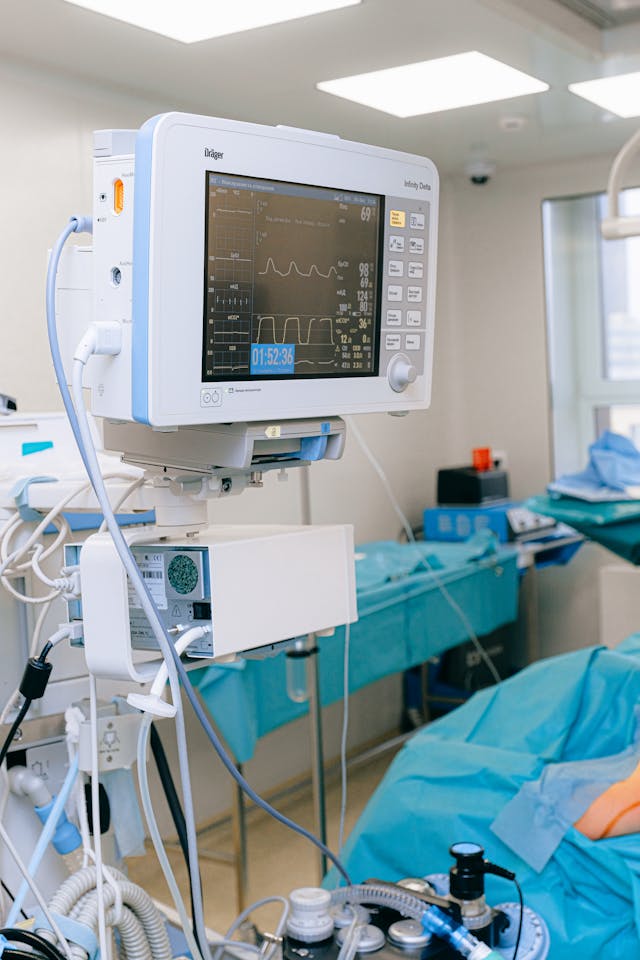Gynaecological cancer treatment may be surgery, radiation chemotherapy, or even more than one of them as the patient needs.
But it's preferred to use more than one of them to get the best result of gynecological cancer treatment.
And to improve the quality of life for patients.
Before discussing the different methods of treatment we should know gynaecological cancer well.

What is gynaecological cancer?
It's a disease that affects only the female as it happens in the reproductive system.
The disease name is determined according to the affected tissue or organ.
It includes ovarian cancer, uterine cancer, vaginal cancer, cervical cancer, and vulvar cancer.
Each one of them has its symptoms and some unique ones.
Diagnosis is very important to know exactly which part is affected and start your treatment protocol according to that.
Types of gynaecological cancer?
Ovarian cancer which starts from ovaries on each side of the uterus may reach the fallopian tube in some cases.
Uterine cancer is the main organ of the reproductive system when babies grow.
If it reaches the vagina then we name it Vaginal cancer.
Vulvar cancer as it's not an interior organ so we named this type as an outer vulvar cancer.
Gynaecological cancer symptoms
First, you should know that not any change in your menstrual cycle is considered as a sign of gynaecological cancer treatment.
But we say that you should be careful, watch out for your body well and if any change occurs.
You may have warning signs to worry about and check if there are any problems.
Heavy vaginal bleeding, It's a sign to go to your doctor especially if you're having menopause, it's not your normal time of bleeding, or even it's more than usual, and if it's happening between periods.
You should go to your doctor if you see any warning signs which are not normal for you.
Heavy bleeding isn't the only sign of cancer but who can say that is your doctor?
Signs and symptoms are always different from one to another in Gynaecological cancer treatment.
So the doctor is the most important person in this case.
Common symptoms in Gynaecological cancer
- Abnormal vaginal bleeding or the presence of daily discharge is a common sign of gynaecological cancer except for vulvar cancer.
- Recurrent abdominal pain, feeling too full, bloating, and pain in your back are included in ovarian cancer.
- Feeling pressure in your muscles is common for uterine cancer.
- Recurrent frequent need for urine is a sign of vaginal cancer.
- In vulvar cancer, it's so different as its main sign is tenderness, so you may notice itching, burning, strong pain, rash, and sores.

Gynaecological cancer diagnosis
To get the gynaecological cancer treatment plan you have to make a good diagnosis.
It's divided into 3 types of diagnosis to get accurate results you may need to use more than one type.
Surgical test
It's the method of dealing with the affected tissues.
But removing them all in an operation.
Most common in Gynaecological cancer treatment.
- Biopsy
It's done by taking a part of the affected or suspicious tissues and examining it outside the body of the patient.
There are many types of biopsy and the method depends on the type of cancer.
- Colposcopy
What's colposcopy?
It's a lighted, magnifying instrument that is used to examine the vagina, vulva, and cervix to check if there is any sign of cancer.
- Endoscopy
What is endoscopy?
A lighted camera is attached to a thin tube to examine the body for suspicious tissues using various types of scopes.
It's used only for some types of pelvic cancer.
Diagnostic imaging
CT a simple would show the size of the tumor and whether the tumor is exact by creating sectional images for your body.
MRI is more accurate than computed tomography as it can examine the tumors more closely by using magnets and radio waves.
PET is done by injecting a small amount of a radioactive substance which spreads in the suspicious tissues making it possible to determine where the tumour is and how its spread.
Ultrasound is a method of using sound waves to show the details of the organs.
Could be transabdominal as waves placed on abdominal, Or transvaginal sending waves by the vagina.
Laboratory tests
Searching for parameters may help in the determination of cancer but can't be used alone as it's not the most accurate.
Gynaecological cancer causes and prevention
It's not a clear cause that could help in being affected by tumours, but many risk factors
- Chronic diseases such as hypertension and diabetes
- HIV
- Hormone replacement therapy after menopause
- Obesity
- Smoking
- Family history of gynaecological cancer
- PCOS (polycystic ovarian syndrome)
- Changes in normal period to get your period before 12 or menopause after 50
- Infertility
As we mentioned before there are many risk factors, some of them are out of our control but the others can be fixed.
As smoking, obesity, to have a routine to check your reproductive system
By pelvic exam, taking vaccines to viruses which affect hour immunity made is suspected to such a disease
And by genetic counselling and testing if you have a family history of gynaecological cancer treatment patients.
Gynaecological cancer treatment
First you should know that if your Gynecologist said that you have cancer and need a gynaecological cancer treatment then you should ask him to nominate a gynecologic oncologist who has treated with women's cancer to set a gynaecological cancer treatment plan for you.
Types of gynaecological cancer treatment
- Surgery by removing the affected tissue
- Chemotherapy uses a special method to kill the carcinogenic cells in place.
- Radiation uses high-energy rays to kill cells in a patient's body
Which one is the most effective for gynaecological cancer treatment?
To be sure no one, but most doctors prefer to combine 2 methods or more to get the best result.
Okay but which one is the best for me?
That can be determined by your doctor and your treatment plan as each one of the 3 methods has its side effects so it varies from one to another how he can bear the pain of gynaecological cancer treatment.
Read more about:


You must be logged in to post a comment.